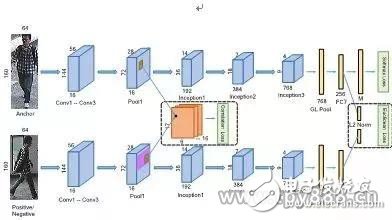Recently, the Alibaba Cloud team has partnered with the Malaysian government on a smart city initiative known as the Kuala Lumpur EA City Brain. This collaboration highlights that Alibaba's smart city solutions have now expanded internationally. Some media have compared Aliyun’s City Brain to security giants like Hikvision and Dahua, though the author believes there is no direct comparison between them. However, the relationship between Alibaba Cloud’s City Brain and the security industry remains closely intertwined. The core of the ET City Brain lies in using artificial intelligence to analyze data from traffic cameras at intersections, optimizing traffic signal timing and improving overall traffic flow.

Background of the City Brain
At the 2016 Yunqi Conference, the Hangzhou Municipal Government announced the launch of the Hangzhou City Data Brain, an AI-powered hub designed to tackle urban challenges such as traffic congestion. The goal was to empower the city with data-driven decision-making, transforming it into a self-regulating and efficient urban environment.
According to available data, the City Brain leverages Alibaba Cloud’s ET AI technology to conduct real-time analysis across the city, automatically allocating public resources and identifying operational issues. Key concerns in traffic management include traffic accidents and pedestrian movement patterns. The project team uses deep learning and image recognition techniques to detect anomalies. For example, by analyzing video footage and comparing object movement trends, the system can identify potential traffic incidents and quickly adjust traffic signals or provide route recommendations.

If a vehicle’s movement deviates significantly from expected patterns, the system flags it as a possible traffic anomaly once a certain threshold is reached.

The system also tracks pedestrian movements by identifying individuals’ locations and times, allowing for optimized traffic light settings and bus stop adjustments.
Alibaba Cloud Chief Technology Officer Wang Jian has emphasized the importance of connecting data sources. He once said, “The farthest distance in the world is not from the South Pole to the North Pole, but from the traffic lights to the traffic cameras. They are on the same pole, yet their data never connects. If data isn’t shared, traffic won’t flow smoothly, wasting valuable city resources and increasing operational costs.†He believes that smart city development should break down data silos, with the “brain†acting as the central coordinator—this was the inspiration behind the City Brain concept.
Currently, the ET City Brain has been implemented in Hangzhou and Suzhou. In Hangzhou, it manages 128 traffic lights, reducing travel time by 15.3% and cutting elevated road travel time by 4.6 minutes. In the central urban area, the system generates over 500 daily alerts with a 92% accuracy rate. In Xiaoshan, ambulance response times were halved. Beyond the City Brain, Alibaba Cloud’s ET Brain also builds open platforms in sectors like healthcare and environmental monitoring, fostering a cross-industry ecosystem that integrates AI with major industries.
Alibaba Cloud’s Security Strategy: Cooperation Over Competition
The success of the City Brain relies heavily on city-wide sensors, with cameras playing a key role in video data collection. Instead of positioning itself as a dominant player in the security industry, Alibaba Cloud sees its role more as a facilitator of collaboration and innovation. While the company aims to lead in smart cities, it recognizes that achieving this requires partnerships with traditional security firms. The integration of smart home, IoT, and smart city strategies is inevitable, and Alibaba Cloud needs to work closely with video surveillance vendors to build a comprehensive ecosystem.
If competition exists, it would be on the platform level. However, competing directly with industry leaders is not a wise move. In the consumer surveillance market, companies like Hikvision and Dahua have chosen to collaborate with Alibaba Cloud, leveraging its AI and cloud computing capabilities while benefiting from Alibaba’s broader ecosystem. This partnership allows both sides to complement each other’s strengths. As the AI era progresses, the security industry is evolving, and the way players operate is changing. It’s worth keeping an eye on which top AI and security partners will be integrated into the ET Brain in 2018—a crucial piece of information for the security sector to track.
4 port epon olt,8 port epon olt,2 port epon olt,mini epon olt,16 port epon olt
Shenzhen Runtop Technology Co.LTD , https://www.runtoptech.com